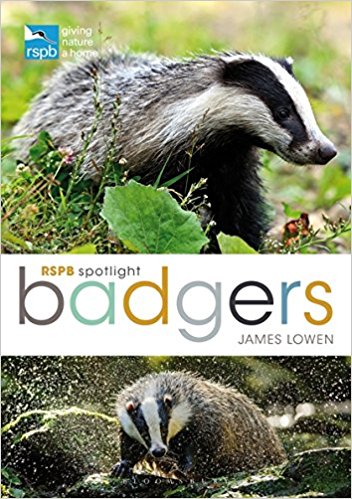Environment
| RSPB Spotlight on Badgers book |
 |
James
Lowen explores the lives of badgers and their communal
living, feeding habits and threats to their conservation. Click
here to buy:
Paperback edition
Kindle edition
|
Badgers and their setts are fully protected under The Protection of Badgers Act 1992
which means that the setts can't be dug up, trampled on, trees felled,
poisoned, smoked-out or any other harmful activity.
However, there are other risks to badgers - the main ones
including traffic accidents, persecution and habitat loss. Illness and
disease kills a few badgers too, but not very many considering the high
proportion killed on the roads before their first birthday.
Badger setts are places where the badger dig their homes,
so they need to be safe and secure, but free of flooding; and with an
adequate flow of air through for good non-draughty ventilation. The area
around the sett should therefore be covered in deciduous trees and shrubs
- ideally ones which allow some ground cover; and provide windfall fruits
or nuts in the autumn. The ground should be pretty much undisturbed -
except by badgers, who will use it to expand a tunnel or too, and dig an
occasional dung pit or latrine.
The soil should be well-drained, but not too sandy or too
much clay; and ideally the woodland should be on a slope (as this helps
with drainage). If there is one entrance to the sett low down, and one
higher up, this can act as a sort of "chimney" which pulls fresh
air through the sett.
Within a few tens of metres of the sett should be an area of loose long grass or
leaves - so the badgers have a source of bedding material to keep their
sett nice and clean.
Immediately around the tunnels entrances should, ideally,
be hidden or concealed by prickly bushes (like brambles) or trees (like
hawthorn or holly). Prickly branches aren't a great obstacle to badgers,
but they can act as a strong deterrent to prevent inquisitive children or
large dogs from disturbing the badgers. They can also help reduce the
chances of the sett being found by badger baiters, who may want to dig the
sett up for the badgers.
As their main food source is earthworms, accessible
grassland should be within a few tens of metres too. This might be a golf
course or pastureland, football fields or even domestic lawns and gardens
(especially useful if the gardens are required to remain as open, or
unfenced as on many modern housing estates). Ideally
too there should be an occasional small stream or fresh-water spring; and
at least some "vermin" species like rabbits or mice, perhaps
with the occasional wasp's nest.
Roads and railways are very dangerous places for badgers,
so should be protected with safe crossing points, like Badger Tunnels; or even
Wildlife Bridges. Your local Badger
Group should know more about these in your locality. |
